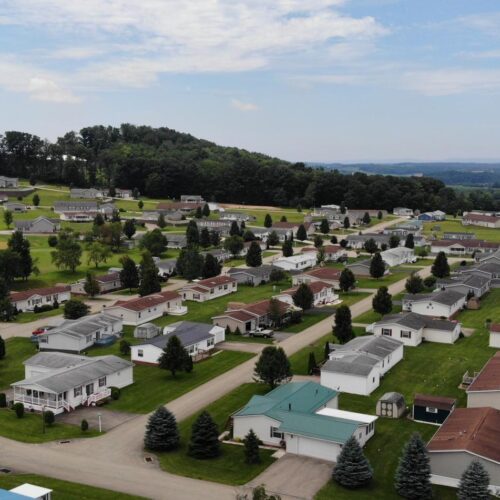Webinar Recap: State Measures to Improve Affordable Housing Access
States across the nation are facing housing shortages resulting in an affordability crisis, and the Northeast is no exception. Fewer new homes are being built now than prior to the Great Recession, according to national findings by Fannie Mae and a regional study by the Regional Planning Association.
As the cost to purchase or rent a home increasingly becomes out of reach for many, income inequality is rising in the United States. Median household incomes also fell in the aftermath of the Great Recession, contributing to a 15-year stagnation. It took until 2015 for median household income to climb back to where it was in 2000 (adjusted for inflation). The widening gap between high-income and low-income earners is being reflected in the market’s behavior. Harvard’s Joint Center for Housing Studies reports that an increasing share of the limited new home construction is being built for the higher-cost market segment.
To unpack these challenges, CSG East hosted an affordable housing webinar on Tuesday, November 14 on “State Measures to Improve Affordable Housing Access.” Opening remarks were delivered by Peggy Bailey, the Vice President for Housing and Income Security at the Center on Budget and Policy Priorities, who highlighted several ways states can influence housing affordability and access: “When it comes to housing, many of those policy choices can be mitigated at the state and local level, policies that can reverse redlining and improve residential integration, that direct resources to affordable housing and community development, and thinking about helping ease the capital costs that it takes to build affordable housing.”
Recommendations to states for improving affordable housing access include the following:
- Rental subsidy for low-income workers
- Expanding tenant-based protections to reduce evictions
- Talking with developers about financing challenges
- Addressing zoning laws and advancing inclusionary zoning
- Addressing the burdensome environmental review process

Senator Russell Huxtable attributed part of Delaware’s affordability crisis to market failure. “There is a huge demand in our area for houses under $200,000, rental properties at $800-900, but the market is not supplying it. Why? Because there is also a huge demand for those $600-800,000 houses,” he said. After spending 2 decades working on affordable housing issues in the nonprofit sector, Senator Huxtable was elected to the Delaware Senate in 2022. He recently sponsored SB 87 legislation, which was signed into law in August 2023, to encourage towns and counties to invest in affordable housing projects by waiving the state’s realty transfer tax fees, in a creative effort to lower development costs for affordable units.
In Connecticut, Representative Geoff Luxenberg identified segregated neighborhoods, local zoning restrictions, NIMBY resistance, and high development costs as leading challenges. Rep. Luxenberg also unpacked some of the acute challenges with the Fair Market Rent formula, which is controlled by the Department of Housing and Urban Development. Rents have increased to such an extent, particularly in high opportunity neighborhoods, that assistance provided through vouchers is insufficient to cover the costs for market-rate housing: “What’s essentially happening in Connecticut is the Voucher Program and the RAP Certificates are eliminating housing choice for the intended recipients. They don’t get to choose where they live. The value of the voucher or certificate forces people to live in high poverty, racially isolated communities.”
The panel also discussed the conventional ways that new construction targets specific levels of area median income, or AMI. “We only do that because we think we can’t build all of the housing that people need, and we know there are not sufficient resources available for subsidies,” said Peggy Bailey. She acknowledged that some people are inevitably left out by functioning this way. She recommended a paradigm shift that considers how to create a housing ecosystem that meets the needs of an entire community, rather than focusing on the construction of one property. For example, if a new building contains 100 affordable units, but none of those are the right size for a 3-person family in the community, the community’s housing needs have not been sufficiently met.
While NIMBY resistance continues to limit housing construction, and efforts to reform zoning laws move slowly across the jurisdictions, questions were raised about the power imbalance that exists between tenants and landlords, and if immediate assistance could be made available to protect against endless rent increases. “It’s clear long-term to ease the burden we have to build more housing, including deed-restricted affordable housing,” said Rep. Geoff Luxenberg. “The power imbalance that’s inherent in a landlord-tenant arrangement is exaggerated in a housing crisis like this. We have to be sensitive to putting protections in place and trying to figure out ways to help people with their pain right now.”
Senator Russell Huxtable described a piece of recent legislation enacted in Delaware, the Right to Representation. The intention of the law is to help low-income tenants at risk of eviction.
Watch the full hour-long discussion here, covering essential questions about state measures to improve housing affordability.




